Chronicles of Tenochtitlan reading Exercise
Experience the Aztec capital through four moments—its island engineering, bustling markets, imperial councils, and the arrival of the Spanish expedition.
Exercise Guide
How to complete:
Read the passages in order to follow the same narrator across different years. Note details about geography, trade, government, and cultural contact. After each passage, answer the questions by citing evidence from the text.
Success tips:
These passages blend first-person observation with historical explanation. Track how Tenochtitlan changes over time and how infrastructure, diplomacy, and belief intersect.
- Highlight sensory clues—sounds of markets, sights from the causeway, scents of offerings.
- Watch how engineers, merchants, and rulers keep the lake city thriving.
- Notice economic details: tribute, taxes, luxury goods, and trade regulation.
- Compare attitudes toward prophecy, power, and newcomers.
- Summarize each scene so you can contrast pre- and post-contact perspectives.
Knowledge:
This story highlights Aztec engineering achievements, marketplace organization, imperial diplomacy, and the early encounter with the Spanish. It strengthens skills in extracting historical evidence, recognizing cause and effect, and analyzing point of view.
Complete the Exercise
Reading Passage 1
I was twelve the first time my father let me climb the western causeway arch at dawn. From there, Tenochtitlan seemed to float above Lake Texcoco—four causeways sewing the island to the mainland, aqueducts carrying fresh water from Chapultepec, and chinampas fanning out like emerald quilts. Canoes slipped along the canals beneath us, laden with maize, beans, flowers, and the reed mats that cradle young seedlings.
The priests say our city rose from prophecy: an eagle, a cactus, a serpent. My father says prophecy needs engineers. He points to the dikes that keep brackish water out, to the sluice gates that release storms, and to the piles driven deep into the lakebed that steady our homes. “Remember,” he tells me, “every plank walkway and reed boat is a promise to keep this island alive.”
Which structures keep Tenochtitlan secure on the lake?
Review the narrator's description.
How does the father reinterpret the founding prophecy?
Consider his advice in the second paragraph.
Which foods travel by canoe at dawn?
Check the first paragraph.
What lesson does the father teach about infrastructure?
Interpret the metaphor in the second paragraph.
How does the causeway viewpoint shape the narrator's feeling?
Infer from the first paragraph imagery.
Reading Passage 2
Six summers later I set up a stall beside my mother's woven baskets in Tlatelolco market. Dawn bells rang and the plaza pulsed with traders—farmers steering chinampa produce, pochteca merchants unloading jade and quetzal plumes, scribes tallying prices on amatl paper. The smell of roasted cacao drifted past piles of obsidian blades and clay cooking pots.
We paid taxes in cloaks and cacao beans, yet the market felt like the heart that kept our canals, warehouses, and barrios alive. Announcement drums boomed from the judges' platform: counterfeit weights meant exile. Beside the tribunal, healers inspected herbal remedies, explaining which infusions cooled fevers or eased childbirth pains.
Who crowds the Tlatelolco market at dawn?
List the groups in the first paragraph.
Which items reveal long-distance trade?
Return to the first paragraph.
What punishment awaits dishonest merchants?
Look at the second paragraph warning.
How does the narrator describe the market's role?
Interpret the metaphor in the second paragraph.
Which taxes does the narrator mention paying?
Return to the second paragraph opening.
Reading Passage 3
By the time I joined the calmecac scribes, Emperor Moctezuma's messengers arrived daily with tribute records. City-states pledged cotton mantles, cacao, warriors, or artisans in exchange for protection. The palace courtyard bustled with runners holding glyph-painted shields, stewards weighing jade, and feather workers building shimmering banners for the imperial audience hall.
In the Hall of Eagle Warriors we painted histories onto cotton cloth—battles, alliances, and marriages binding altepetl into an empire. When envoys from Texcoco visited, they brought poet-philosophers who debated astronomy and law beside the emperor's advisors. Tribute kept storehouses full, but discourse kept the empire sharp: engineers proposing new dikes against floods, healers requesting canals for floating apothecaries, merchants recounting coasts beyond the horizon.
What duties occupy the palace courtyard?
Review the first paragraph.
How is imperial power portrayed?
Interpret the second paragraph.
What cultural exchange occurs during Texcoco envoys' visits?
Look at the second paragraph.
Which projects do engineers and healers request?
Check the closing sentences.
What medium preserves battle histories?
Return to the second paragraph.
Reading Passage 4
In the emperor's fifteenth year, rumors rippled across the lake: strangers with metal skins landing at the eastern coast. Huexotzinco scouts brought reports of thunder-sticks, armored beasts, and sparkling glass. Moctezuma doubled the guards on every causeway and ordered market judges to silence panic.
When the strangers reached the western causeway, the city glittered with banners and incense. Moctezuma, robed in turquoise, greeted Hernán Cortés with flowers and cacao. Yet the plaza fell quiet as Cortés raised a cross and his priests swung incense in the opposite direction. That night in the calmecac we debated their intentions: tribute, alliance, or the lake itself.
How does Moctezuma respond to the rumors?
Review the first paragraph.
What contrast marks the meeting with Cortés?
Look at the second paragraph.
What religious difference does the narrator notice?
Observe the ceremonies in the second paragraph.
What uncertainties remain after the meeting?
Read the closing lines.
How does the narrator describe the mood after Cortés departs?
Infer from the final sentence.
Share this exercise
Help others learn reading by sharing this exercise
Related Exercises
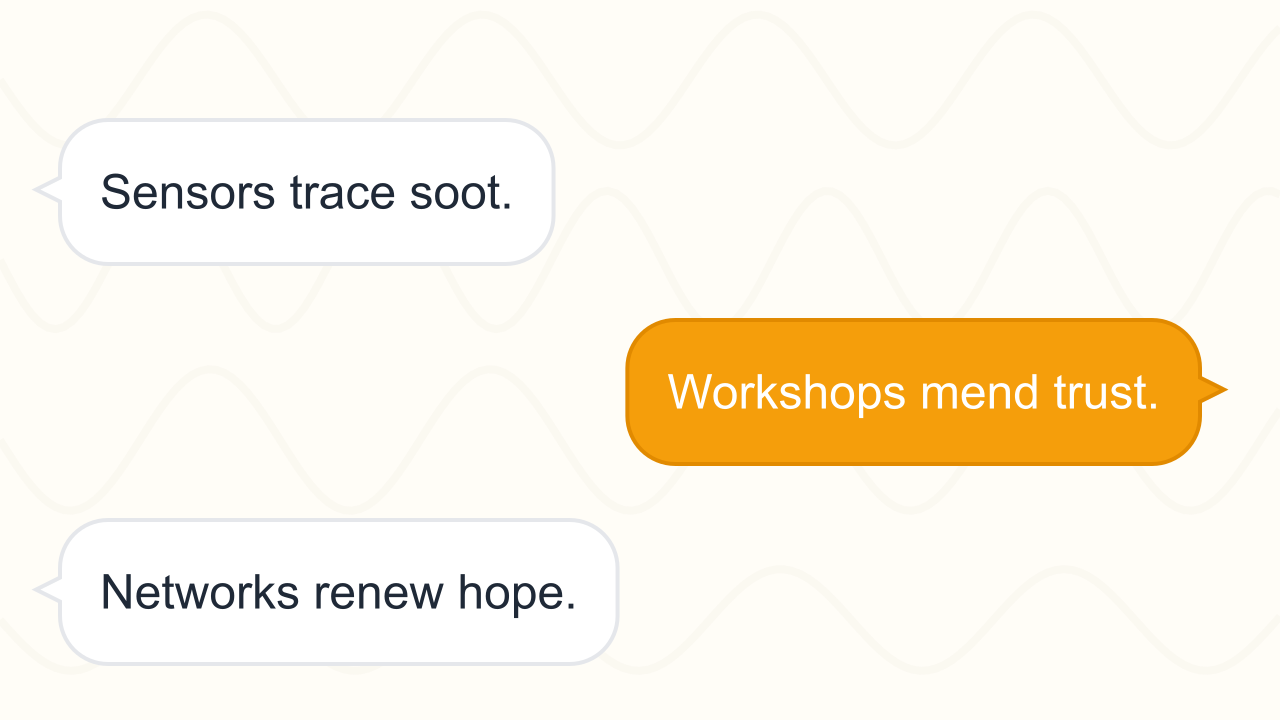
Designing Regenerative Networks for Future Neighborhoods
Trace how innovators, residents, and policymakers build interconnected solutions that cut pollution, expand recycling, and redesign everyday systems across six detailed case studies.
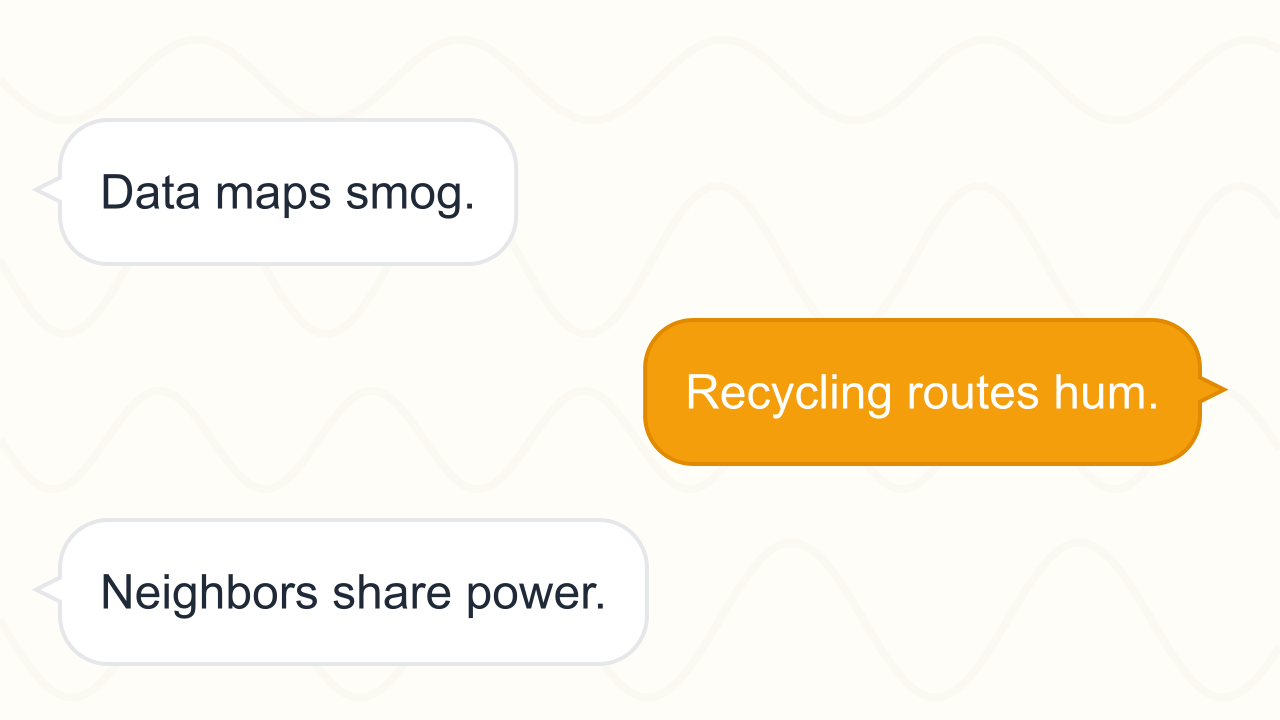
Clean Cycles for Tomorrow
Discover how neighborhoods reinvent waste systems, deploy new materials, and empower residents to shrink pollution footprints while expanding recycling access.
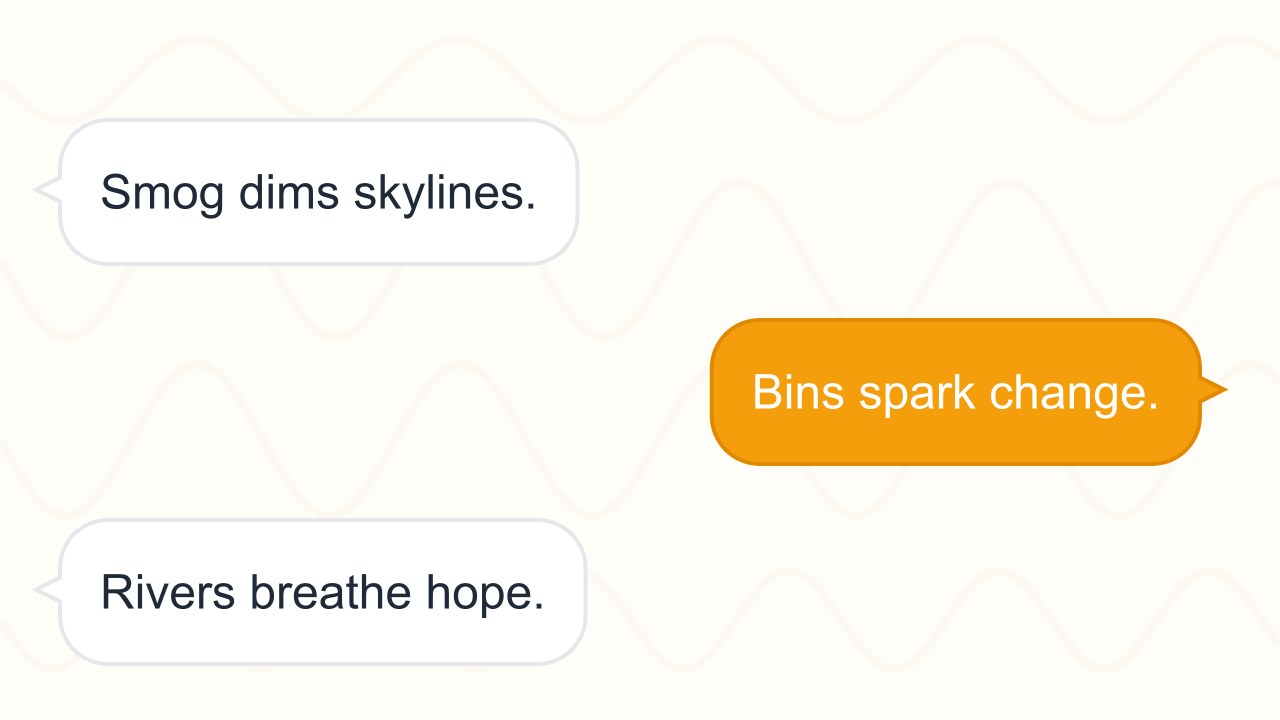
Pollution and Recycling: Restoring Our Cities
Explore how air, water, and waste pollution affect urban life, and examine the recycling innovations and community actions working to clean cities around the world.
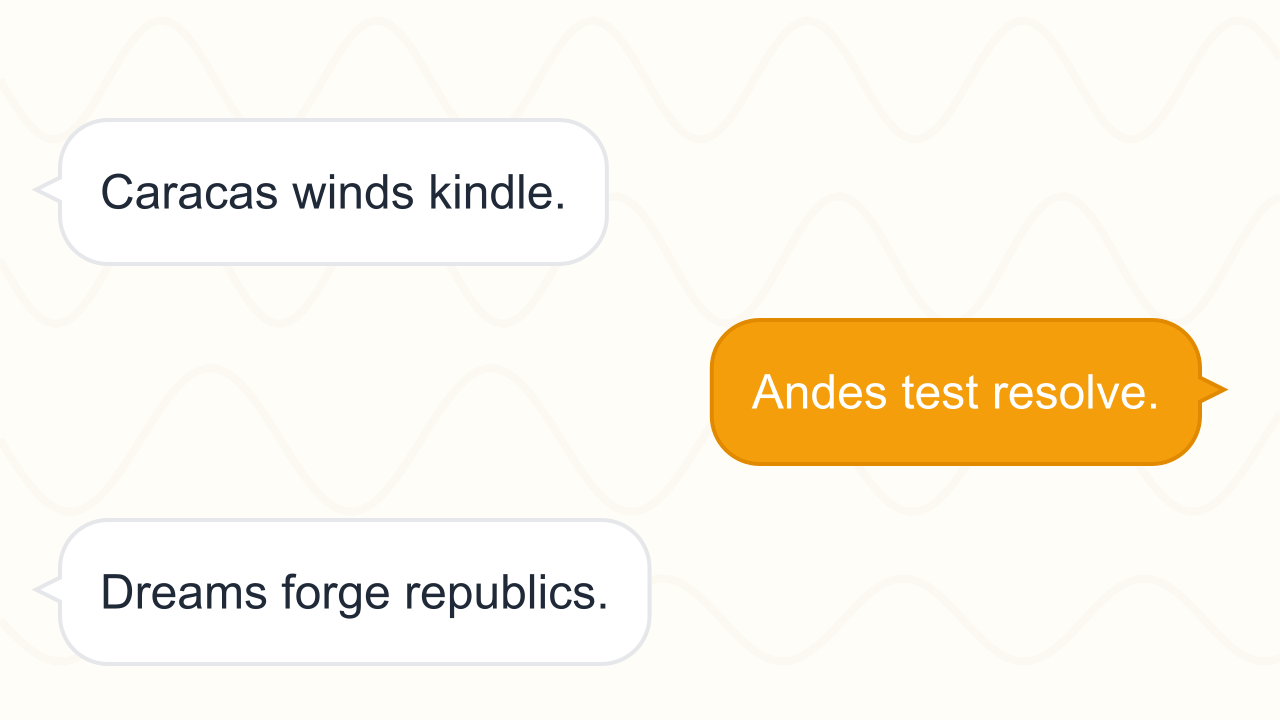
Simón Bolívar: Liberator of the Andes
Journey with Simón Bolívar from his Caracas youth through daring Andean campaigns and the struggle to define lasting republics across northern South America.
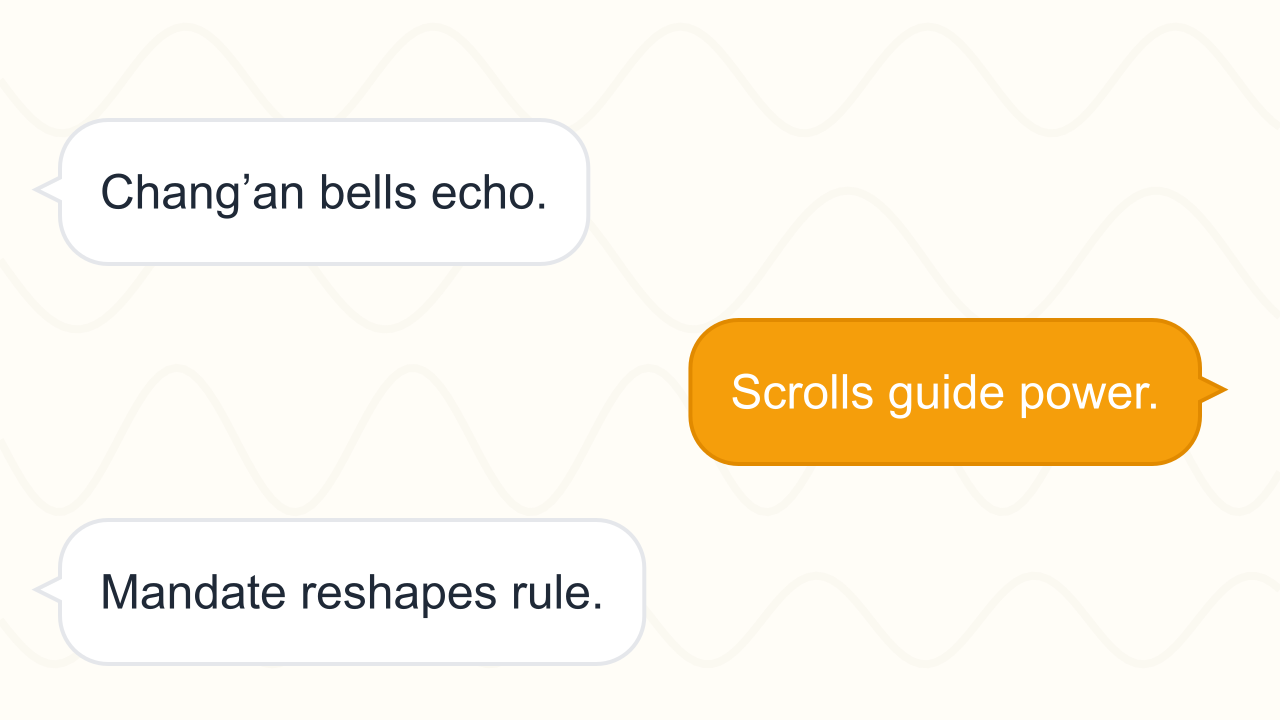
Wu Zetian: Mandate of the Tang
Follow Wu Zetian’s ascent from a palace attendant to emperor of the Zhou dynasty, examining how she wielded scholarship, alliances, and reform to shape eighth-century China.